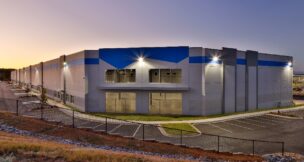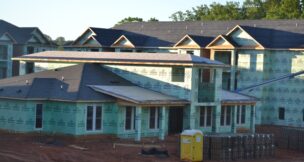South Carolina’s population is booming — what it means for jobs and housing
Krys Merryman //January 17, 2024//

A moveBuddha study showed that South Carolina was the most popular state to move to in 2023, continuing its influx of migration hot streak. (DepositPhotos)

A moveBuddha study showed that South Carolina was the most popular state to move to in 2023, continuing its influx of migration hot streak. (DepositPhotos)
South Carolina’s population is booming — what it means for jobs and housing
Krys Merryman //January 17, 2024//
A moveBuddha study showed that South Carolina was the most popular state to move to in 2023, continuing its influx of migration hot streak.
The report shows that the Palmetto State had a moving in-to-out ratio of 2.1, meaning more than twice as many people searched for moves into the state than out of it.
Other South Carolina highlights from the study include:
- SC also earned the highest net searches from movers per capita of all the states.
- Four South Carolina cities were among the top 25 most popular cities to move to in 2023, including No. 2 Myrtle Beach and No. 5 Summerville.
- States known for affordability and boasting mountain terrains saw major interest from movers, including South Carolina, Montana, North Carolina, Colorado, Tennessee, and Maine.
Overall, the South dominated the list of top 25 most popular cities to move to in 2023.
Population growth represents economic opportunity
Surveys continue to show that reasonable housing prices and the overall low cost of living in South Carolina are a big part of the reason people are moving here, said Hannah Hopewell, South Carolina Chamber of Commerce membership and communications manager.
“People are moving to the state for the low taxes, warm weather, a good quality of life and reasonable housing prices,” Hopewell added. “Many are also attracted to the jobs that are being created in our economy.”
South Carolina Gov. Henry McMaster recently announced that 14,000 new jobs were added to South Carolina’s economy in 2023. This is on top of the 14,000 jobs that were added in 2022, she said.
“Companies are moving jobs to South Carolina in record numbers,” said Hopewell. “Many of those moving here will join our workforce and help to fill those new jobs and existing jobs that are currently unfilled. Our population growth is a major attraction for companies looking to move to the Southeast.”
Population growth represents economic opportunity, not just for those moving to the state but also for those who are already here. It is important to do the right things — such as investing in the workforce and infrastructure — to maintain that growth, she added.
“Population growth creates economic opportunity for people and companies who are already here by expanding the economy in which we live,” said Hopewell. “The newcomers buy houses, insurance products, food and other goods and services that are produced here. They help fill the jobs that make our companies successful. Some are entrepreneurs who will put people to work. They contribute to the tax base that funds public services at the local and state levels, which helps to keep taxes low.”
Nick Kremydas, CEO of South Carolina Realtors, agreed that South Carolina offers a quality of life that not many other states can provide — and it’s that quality of life that makes South Carolina so attractive, he said.
“Our elected leaders have done a great job of making South Carolina a strong economic force in the U.S. and the world, attracting jobs, and creating opportunities for our citizens and communities,” said Kremydas. “‘Jobs need a home to sleep in at night,’ as homebuilders like to say.”
What the growth means to current residents
Various studies confirm that Americans are moving less than ever before. According to a data analysis by the National Association of Realtors, the U.S. moving rate has declined overall in the past six years.
For people still moving, remote work may continue to be a factor in location-independent Americans’ searches, the study revealed.
The rate of remote work in U.S. households is the lowest it’s been since the pandemic started, according to the U.S. Census Bureau. But the rate is still much higher than it was in pre-pandemic times.
Freedom from the office may still enable Americans to broaden their searches for states and cities with a high quality of life, a reasonable cost of living, and where they think they can thrive in 2023 and beyond, no matter what, according to the study.
So, how does the influx of movers affect residents and the housing market in South Carolina?
“To better understand the impact on the real estate market today, we have to review the recession of 2008,” said Kremydas.
South Carolina’s population has grown at a steady pace since the recession in 2008, he said. While the recession led to better underwriting and overall lending practices and corrected what was an overheated real estate market, he added, it also had the effect of wiping out many of the local homebuilders in the state and across the country.
“As a result, we’ve experienced more than a decade of historically low building levels, especially in the single-family housing market,” Kremydas said. “Why is this important? Because for the last 12 years, South Carolina has been one of the fastest growing states. The results of this imbalance have played out in the marketplace (especially since the onset of the pandemic) with escalating prices and extremely limited inventory.”
Home prices in South Carolina have increased by almost 50% since 2020, he said. “Great news if you’re a homeowner, not so great if you’re buying. Middle-class South Carolinians have been struggling to afford to live close to their work, which is made even tougher in today’s environment when you also add in higher interest rates, which are now thankfully on the decline.”
The state still needs supply to catch up with the demand for home prices to stabilize, Kremydas added.
“I think we’re quite a few years away from that, as it will take some time to make up for a decade of underbuilding,” he said. “In our fastest growing metros, there are a few that condemn growth and development and actively strive to limit or stop growth through moratoriums, taxes, fees, etc. But Realtors want to see South Carolina grow responsibly, ensuring our communities have the infrastructure, schools, open space, economic growth, etc. they need to continue to be so attractive and provide a great quality of life. It can be done. Policies to slow or stop growth generally will exacerbate the problems we already have. Again, when you artificially shrink supply, prices will go up, disproportionately affecting working class South Carolinians and those families aspiring to homeownership.”
t















